Revamped National Gallery Sainsbury Wing unveiled: Annabelle Selldorf gives us a tour
The National Gallery Sainsbury Wing redesign by Selldorf Architects is ready to open its doors to the public in London; we took the tour

The criticism Annabelle Selldorf received for her National Gallery Sainsbury Wing conversion plans was unprecedented when they were first presented. In October 2022, eight former presidents of the RIBA signed a letter to Westminster City Council criticising the proposals of her New York-based practice Selldorf Architects’ proposals for changing 'a finely conceived space into an airport lounge'. Critics and conservation bodies waded in. Denise Scott Brown, who, with her partner Bob Venturi (as the duo Venturi, Scott Brown), designed the original, 1991-completed Sainsbury Wing, called Selldorf’s work 'a clown in a tutu'. In the end, as the institution prepares to reopen its doors and unveil its newly refreshed section, it is hard to see what all the fuss was about.
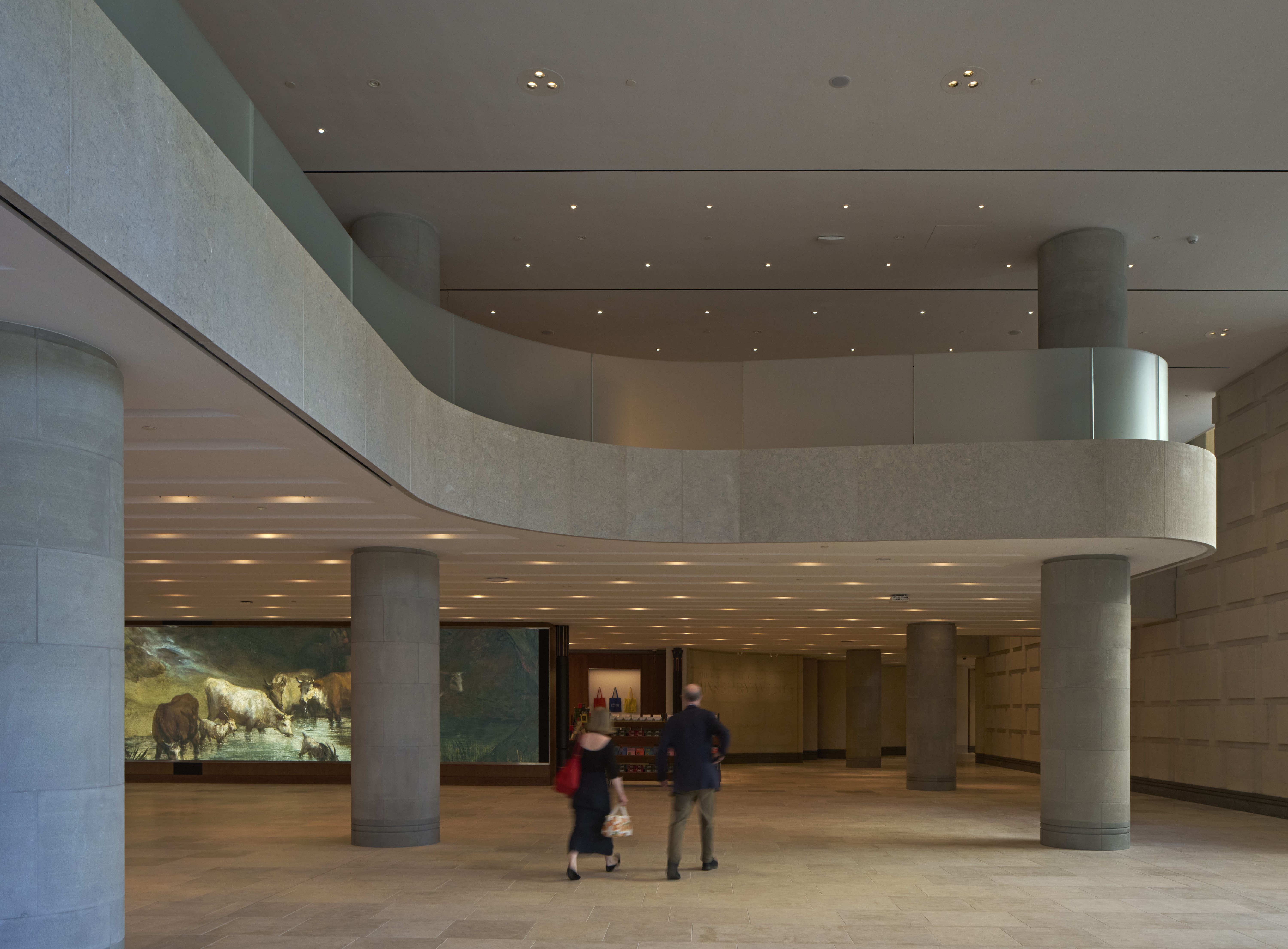
National Gallery Sainsbury Wing redesign revealed
What we have in reality is an intelligent, restrained reworking of an entrance space that at ground level never worked in the way in which it was intended, and certainly not in an era of mass museum visitorship. Venturi, Scott Brown claimed that their ground-floor entrance was like a crypt beneath a cathedral, and indeed it was a rather dark space dominated by heavy columns, from which one would rise up to the galleries on the second floor.
The architectural strategy of compressing space and then revealing a larger volume is a familiar one. In the case of the National Gallery, though, this didn't apply, given that the Early Renaissance galleries on the second floor, also by Venturi, Scott Brown (untouched in the renovation), were hardly massive volumes. As the German-born Selldorf, who has designed a number of contemporary art galleries in London, wryly observes, 'I have never entered a church through a crypt.'
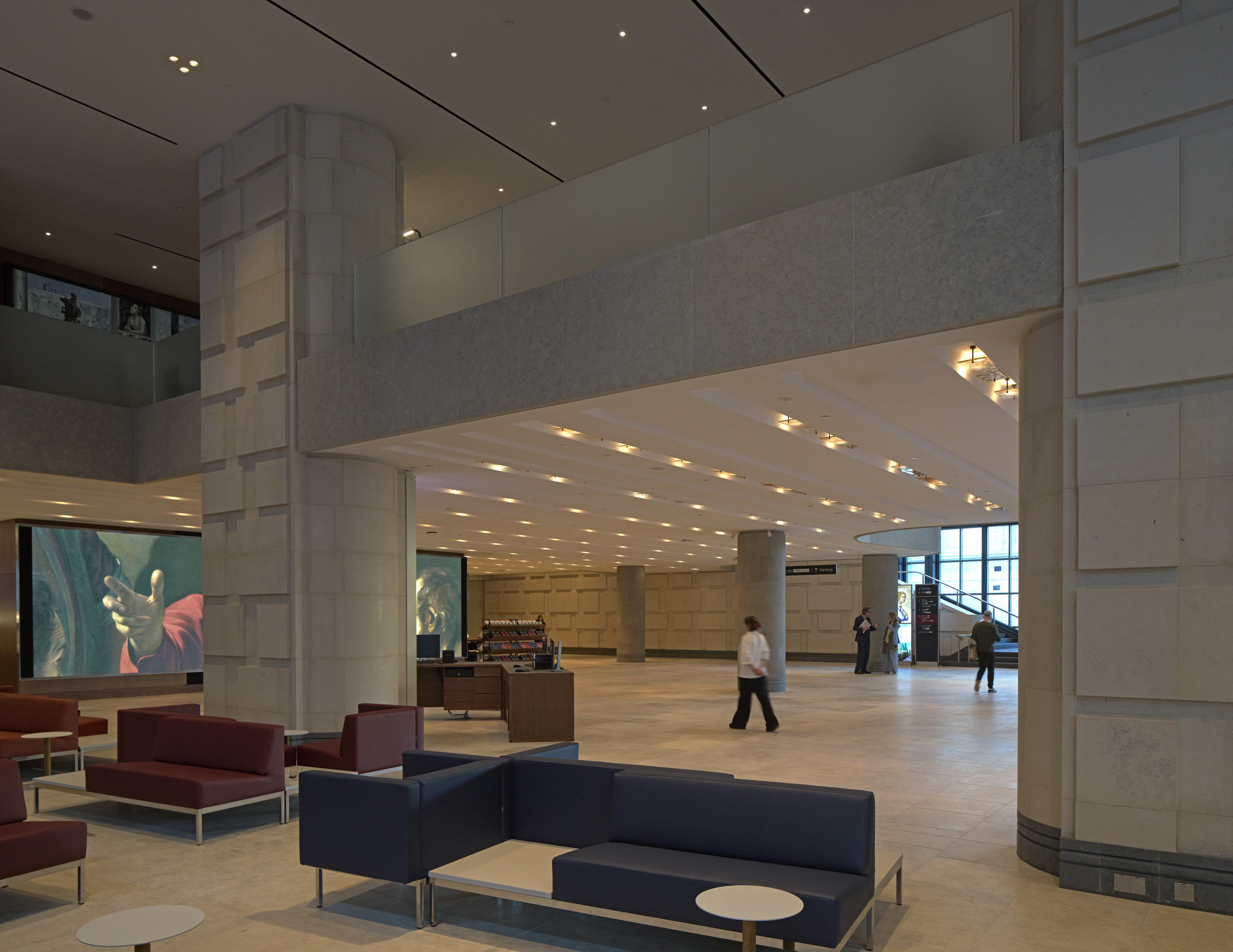
The changes she has made are well considered. Externally, the building meets the public space of Trafalgar Square in a more seamless way. An incongruous walled courtyard in front of the main building has been removed, clarifying the entrance to Jubilee Walk (which runs between the Sainsbury wing and the main building) and allowing those approaching the building to appreciate Venturi, Scott Brown’s playful façade that concertinas into a sculptural relief the colonnade of William Wilkins 1838 building.
The revolving doors to the wing have been replaced with automatic glass doors and discreet, integrated metal detectors. The main change is that two new double-height volumes to the east and west have been added to the entrance, allowing more natural light from Whitcomb Street and alongside the epic staircase to the east. The shop has been replaced by informal café seating and a bar. Retail is divided between a space on the mezzanine, adjacent to a new restaurant, and a more discreet space on the ground floor, recessed behind a 10.6m long media screen that is programmed to show details of the paintings inside, dominating the entrance visually.
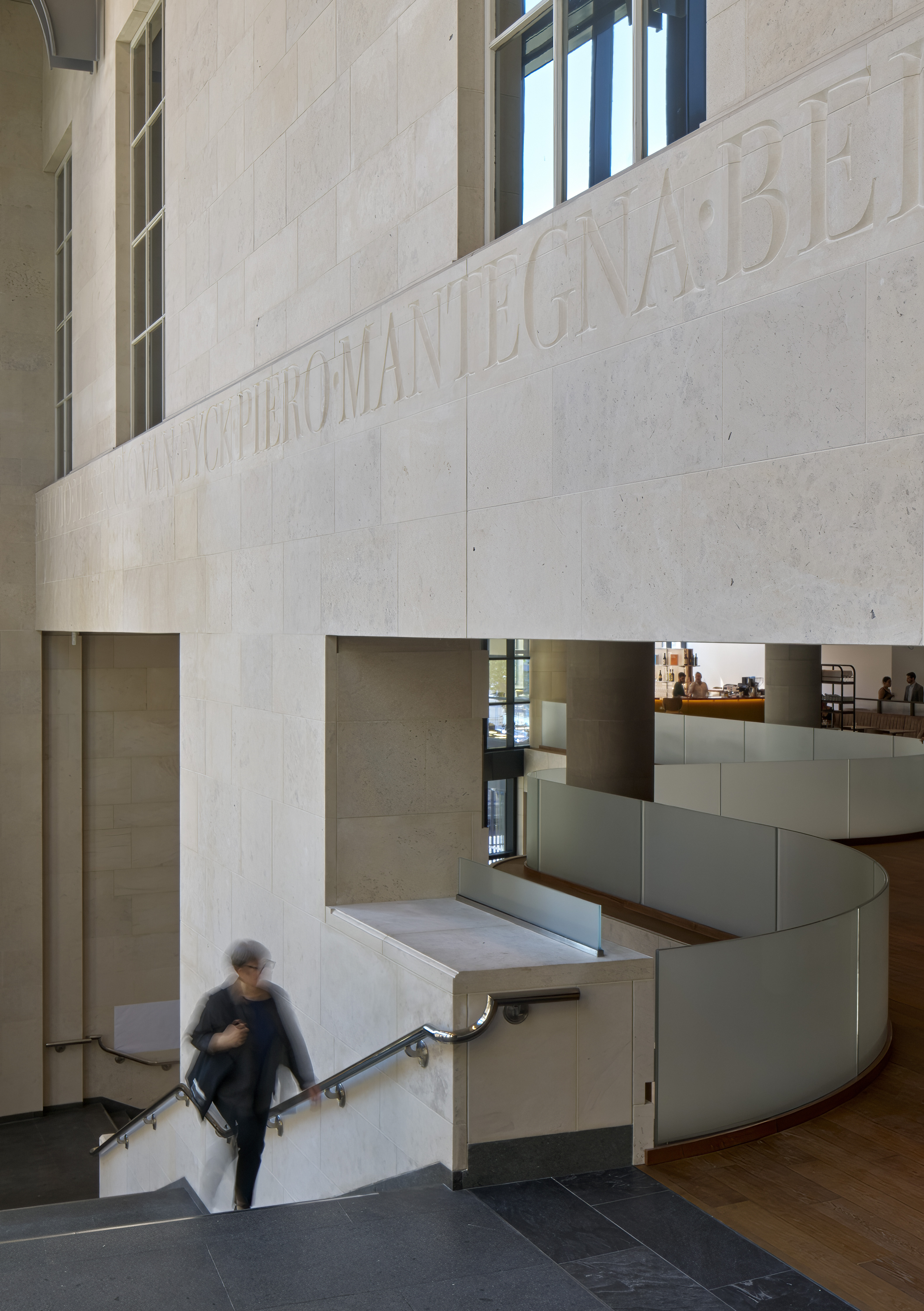
Above, the mezzanine is now a real mezzanine rather than a cramped interstitial floor. Beneath, a subterranean link to the basement of the main building will come in a subsequent phase, creating a circulation loop, but for now, that really is it. Selldorf has renovated several historic buildings in London as contemporary art spaces for, among others, Hauser & Wirth and Thaddaeus Ropac, and has just completed a refurbishment of The Frick Collection in New York. She works with existing palettes, so the ground-floor surface for the National Gallery is a similar limestone to that which surfaces Trafalgar Square outside. She has rationalised the alignment of the existing columns, reducing their radius but retaining the existing pietra serena, a blue-grey sandstone.
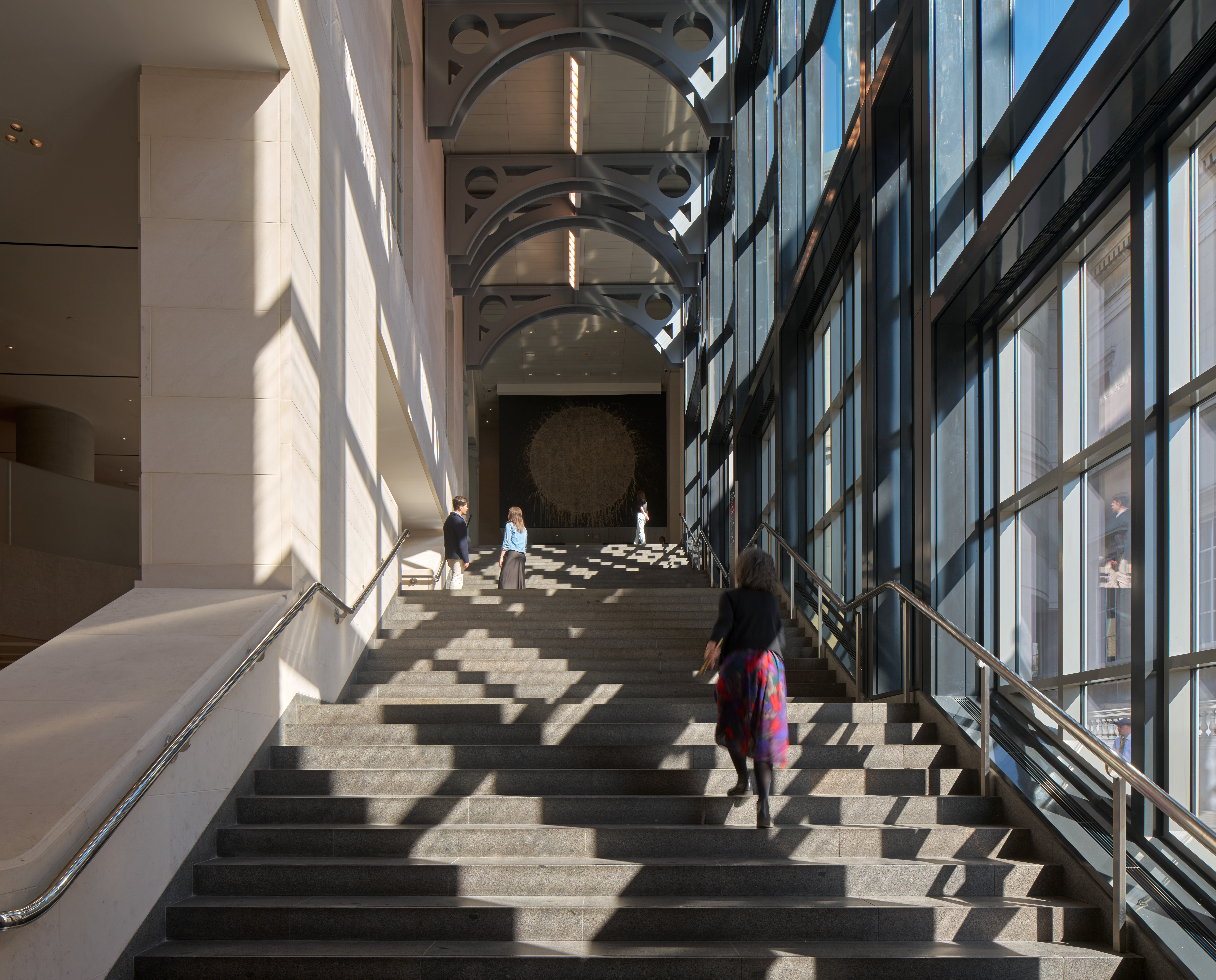
Her work alongside conservation specialist Purcell on the National Gallery is typically simple and restrained, providing much-needed, unshowy architectural surgery. In 1990, before the Sainsbury Wing opened, the building welcomed 3.7 million visitors annually. In 2019, before Covid and the gallery’s partial closure for refurbishment, it welcomed over 6 million. With a generous main entrance, integrated security systems and 60 per cent more open public space than before, the institution now has what it needs to operate in a new world.
Receive our daily digest of inspiration, escapism and design stories from around the world direct to your inbox.
Tim Abrahams is an architecture writer and editor. He hosts the podcast Superurbanism and is Contributing Editor for Architectural Record
-
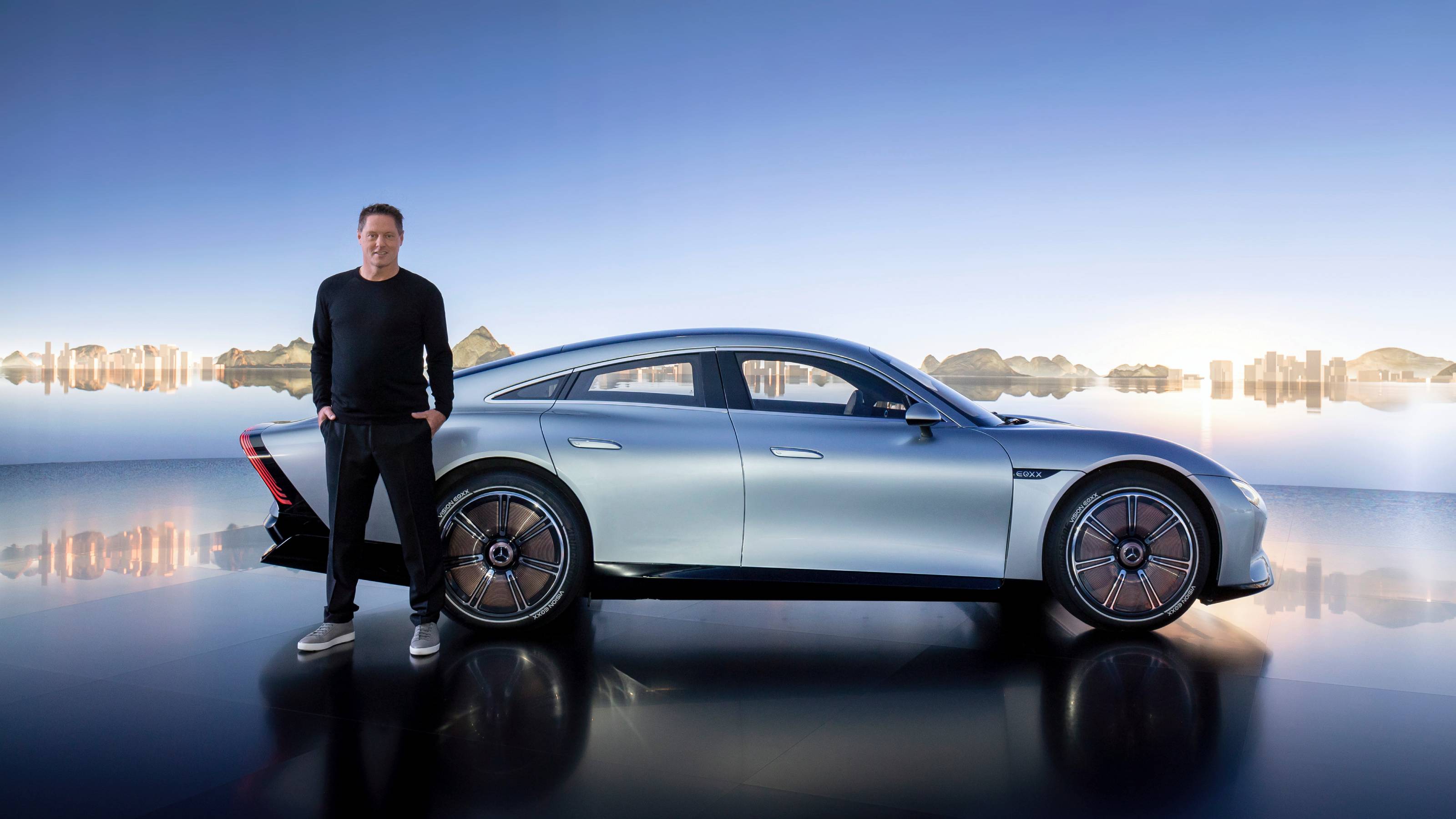 Gorden Wagener leaves the helm of Mercedes-Benz design after 28 years with the company
Gorden Wagener leaves the helm of Mercedes-Benz design after 28 years with the companyThe German designer is stepping down from the role of chief design officer at Mercedes-Benz. We look back at his influence and impact on the world of automotive and luxury design
-
 These Christmas cards sent by 20th-century architects tell their own stories
These Christmas cards sent by 20th-century architects tell their own storiesHandcrafted holiday greetings reveal the personal side of architecture and design legends such as Charles and Ray Eames, Frank Lloyd Wright and Ludwig Mies van der Rohe
-
 Lucila Safdie’s ‘feminine and surreal’ womenswear is inspired by teenage bedrooms and internet lore
Lucila Safdie’s ‘feminine and surreal’ womenswear is inspired by teenage bedrooms and internet loreThe latest in our Uprising series, the Central Saint Martins graduate is honing a pastel-shaded vision rooted in depictions of girlhood in film and literature
-
 Arbour House is a north London home that lies low but punches high
Arbour House is a north London home that lies low but punches highArbour House by Andrei Saltykov is a low-lying Crouch End home with a striking roof structure that sets it apart
-
 A former agricultural building is transformed into a minimal rural home by Bindloss Dawes
A former agricultural building is transformed into a minimal rural home by Bindloss DawesZero-carbon design meets adaptive re-use in the Tractor Shed, a stripped-back house in a country village by Somerset architects Bindloss Dawes
-
 RIBA House of the Year 2025 is a ‘rare mixture of sensitivity and boldness’
RIBA House of the Year 2025 is a ‘rare mixture of sensitivity and boldness’Topping the list of seven shortlisted homes, Izat Arundell’s Hebridean self-build – named Caochan na Creige – is announced as the RIBA House of the Year 2025
-
 In addition to brutalist buildings, Alison Smithson designed some of the most creative Christmas cards we've seen
In addition to brutalist buildings, Alison Smithson designed some of the most creative Christmas cards we've seenThe architect’s collection of season’s greetings is on show at the Roca London Gallery, just in time for the holidays
-
 In South Wales, a remote coastal farmhouse flaunts its modern revamp, primed for hosting
In South Wales, a remote coastal farmhouse flaunts its modern revamp, primed for hostingA farmhouse perched on the Gower Peninsula, Delfyd Farm reveals its ground-floor refresh by architecture studio Rural Office, which created a cosy home with breathtaking views
-
 A revived public space in Aberdeen is named Scotland’s building of the year
A revived public space in Aberdeen is named Scotland’s building of the yearAberdeen's Union Terrace Gardens by Stallan-Brand Architecture + Design and LDA Design wins the 2025 Andrew Doolan Best Building in Scotland Award
-
 The Architecture Edit: Wallpaper’s houses of the month
The Architecture Edit: Wallpaper’s houses of the monthFrom wineries-turned-music studios to fire-resistant holiday homes, these are the properties that have most impressed the Wallpaper* editors this month
-
 A refreshed 1950s apartment in East London allows for moments of discovery
A refreshed 1950s apartment in East London allows for moments of discoveryWith this 1950s apartment redesign, London-based architects Studio Naama wanted to create a residence which reflects the fun and individual nature of the clients